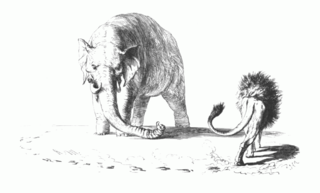
Back منافسة النمسا وبروسيا Arabic Deutscher Dualismus German Αυστρο-Πρωσικός ανταγωνισμός Greek Rivalidad Austria-Prusia Spanish Dualisme Jerman ID Rivalità Austria-Prussia Italian Dualismo alemão Portuguese Alman ikiliği Turkish Австро-прусське суперництво Ukrainian Cạnh tranh Áo Phổ Vietnamese

Austria and Prussia were the most powerful states in the Holy Roman Empire by the 18th and 19th centuries and had engaged in a struggle for supremacy among smaller German kingdoms. The rivalry was characterized by major territorial conflicts and economic, cultural, and political aspects. Therefore, the rivalry was an important element of the German question in the 19th century.
Both opponents first met in the Silesian Wars and Seven Years' War during the middle 18th century until the conflict's culmination in the Austro-Prussian War of 1866.
The German term is Deutscher Dualismus (literally German dualism), which does not cover only rivalry but also cooperation, for example in the Napoleonic Wars. Indeed, both powers did jointly dominate the German Confederation which functioned only in times of cooperation (1815–1848 and 1851–1859). They still fought on the same side (against Denmark) in the Second Schleswig War (1864).
After 1866 (North German Confederation) and 1871, the new German nation state was dominated by Prussia. As Austria (or Austria-Hungary, since 1867) no longer struggled over the hegemony in Germany, the term Deutscher Dualismus became meaningless. Germany and Austria-Hungary soon became close allies, as proven by the Zweibund of 1879. Both countries were the main Central Powers during World War I (1914–1918). After that war, Austria-Hungary fell apart, and Germany became a republic.
© MMXXIII Rich X Search. We shall prevail. All rights reserved. Rich X Search